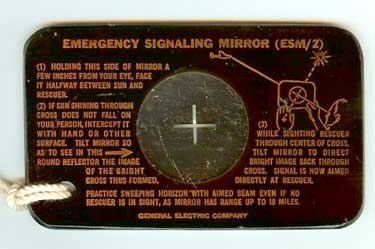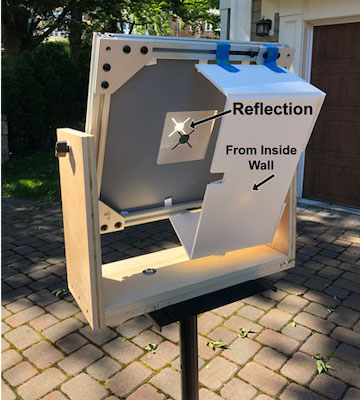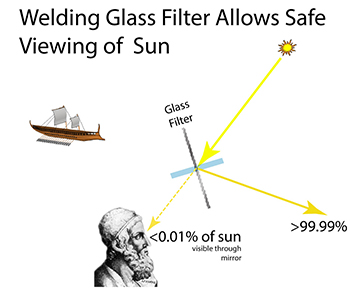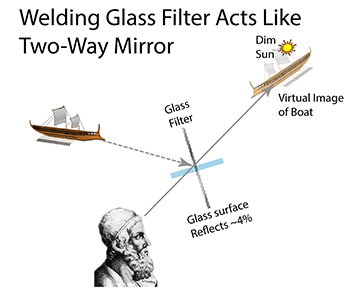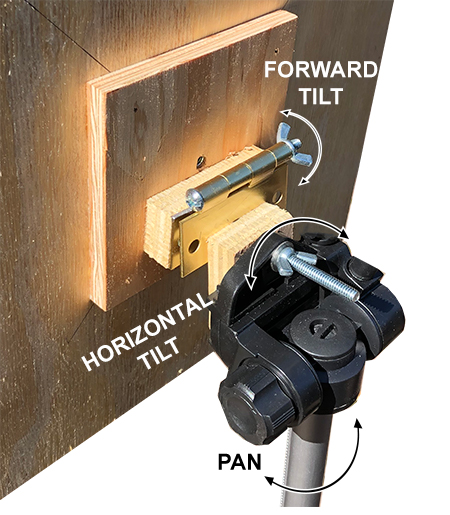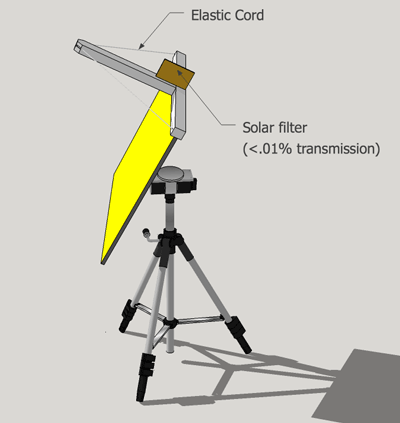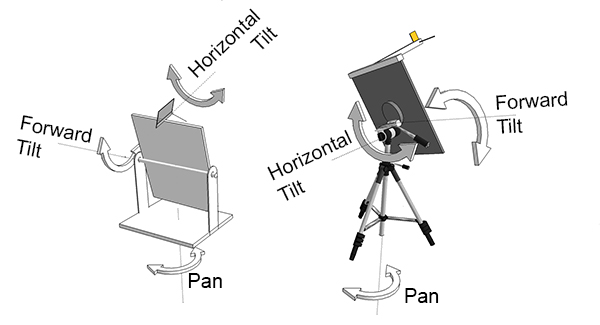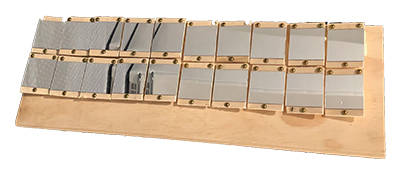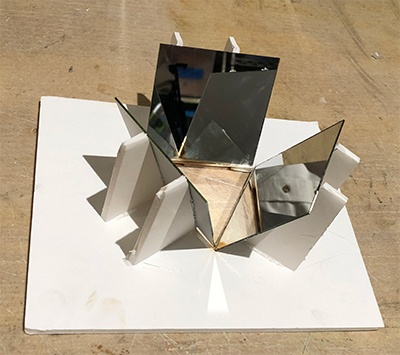| g e n u i n e i d e a s | ||||||
 |
 |
 |
 |
 |
 |
 |
| home | art and science |
writings | biography | food | inventions | search |
| Archimedes STEALTH Death Ray | ||||||||
|
Jan 2015
12 minute tutorial and challenge
Note this principle is related to the "signaling mirror" (ESM/1 and ESM/2) concept developed during WWII to help soldiers communicate across long distances, or to attract attention during search and rescue operations.
A wonderful contemporary instructional video from WWII for the ESM can be found here, and even today you can still buy signaling mirrors for hiking employing similar principles. I expect, given the number of people (including myself) who independently discovered the concept of a partial reflection to orient a virtual image, that the same approach was known by the ancient Greeks. The Boys Scouts of America also maintain a site with very clear guides to signal mirror technology. It's straightforward to scale up the ESM- here is our second prototype made by etching the paint and aluminum metallization off the back of a mirror tile (Archimedes would have cut a slot in a brass mirror). Note we opened up the center of the cross to make it easier to view the target- this does not reduce accuracy as long as the two arms of the cross are narrow and aligned. We also added a wall over half the rear of the mirror to better catch the transmitted sun rays. The wall should be colored a neutral brown or gray- otherwise the reflected sun rays passing back through the cross are so bright, they reflect off the clear glass in the center of the cross and obscure the target. On the other hand, one nice feature of the ESM is you are never peering directly at the sun - so relatively eye-safe:
Assuming you plan on building your own Death Ray*, how do you target the device? As explained in the video, the mirror is oriented in three dimensions. Normally, people are familiar with the three Cartesian dimensions, like "X, Y and Z" or "1250 Ave of the Americas, 6th floor, NYC". In the case of the Stealth Archimedes Death Ray, the dimensions are "pan, forward tilt and horizontal tilt". These three angular motions are related to the Euler coordinate system-- the bane of physics students everywhere, and somewhat difficult to visualize. To aim the ESM, simply sight through the center hole onto the target. Sunlight passes through the aiming cross and casts a "sunbeam" shaped image on the back wall. View the reflected image of the cast cross by peering at an angle to the rear mirror face. Then adjust the two gimbal axes until the etched cross window in the mirror coincides exactly with the reflected cast image of the window, while keeping the target in the center of the cross. If you cover the mirror with a cloth to obscure the beam during aiming, you have to leave a small hole in the cloth to let sunlight through the aiming cross. Even if you paint the area around the cross matte black, a little reflected light will hit the target, giving your position away. But just a little.... The challenge with the ESM approach is the mirror support- for proper aiming, the head must rotate the mirror around the exact center of the cross, otherwise the target's view shifts as mirror is adjusted to bring the reflection into alignment with the cross in the mirror. Basically a two-axis gimbaled mount. Gimbal construction is simple for a small signaling mirror, but more challenging for a 2 foot heat reflector. Fortunately, the mount's accuracy is unimportant- the alignment is self-referencing between the slot in the heat mirror and the slot's reflection. Still, a gimbal mount is complex, bulky and a custom build- raising costs when you have to replicate 200 times. The death ray in the video uses a different principle- separating the aiming from the heating mirror. Aiming is a more systematic process in this design than with the ESM, but accuracy depends on build precision, and even small errors accumulate over long distances. For example, a 1° misalignment of the aiming mirror support to the heat mirror plane is a 1.75 foot aiming error at 100 feet. The ESM is self-referencing. In addition to the two designs shown in the video, a complementary design is more effective and easier to construct and aim. In this case, the observer moves to the OPPOSITE side of the aiming "mirror", and views a VIRTUAL image of the boat against a dim image of the sun viewed though a plate of welding glass:
The "trick" with this approach is to buy/modify a tripod head which ensures the "forward tilt" is always in the plane of the aiming mirror. An example of this modification is shown here, constructed out of an old tripod, a hinge and some wing nuts:
To aim the mirror with this tripod head:
Experts recommend a welding filter with a shade number of #12 (0.002% visible light transmission) to view solar eclipses, though I use a #10 (0.01% transmission) for brief periods. Other alternatives, such as a stack of CDs, or two-way mirrors, can be effective, with the advantage of a brighter virtual image, but when in doubt, choose the welding filter. You might still want to wear dark glasses in case you accidentally view the sun directly. A couple of build details: Instead of a rigid gnomon that can bend or kink, I use an elastic cord stretched over the aiming mirror arm. The welding filter is set into a tight dado, and after the rig is assembled, a marker line is drawn on the mirror arm to indicate the perpendicular shadow position for the gnomon. Make sure all three axis are mutually perpendicular and move smoothly and precisely.
|
||||||||
| ----------------------------------------------------
* We've measured the combustion threshold using a fixed array of twenty 3" mirrors, aligned to focus at 5 feet. These twenty mirrors caused newspaper, or a dark cotton scarf to smoke, but not burn. For waterproofing (among other reasons) roman ships were likely coated with back tar, and the sails with wax or linseed oil. Thus testing on dark surfaces is warranted.
Rather than building a sixty mirror array, we arranged three mirrors, each tilted at 22.5 degrees, to act as a flat plate concentrator. These fifty to sixty equivalent flat mirrors caused dark wood, newsprint or dark fabric, to immediately smoke and catch on fire in under a minute. Will check the effect of linseed oil and tar in a future test.
|
||||||||
Contact Greg Blonder by email here - Modified Genuine Ideas, LLC. |
